Part of paid search is planning ahead to know how to spend your client’s money in the best possible way. To do that you need to start with a budget and delegate which platforms get a piece of your budget pie. But what happens when you aren’t given a budget and asked to give projections for a client? If the client has an established search campaign you can look at past performance and look at the percentage of growth from year over year or month over month. If your client has tested paid search on and off and has sporadic spend, the task may feel impossible, but don’t fear because after today you will have this 4-step resource to help you!
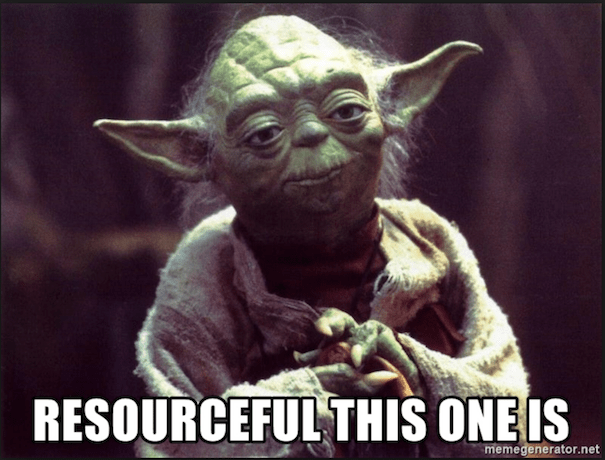
1. Pull Reports
When I am stuck on a projection problem, the first place I go is back in time. I pull a report in Google Ads of the past performance and I look to see if I can find any patterns in spend, clicks, CTR or any key metric that is important to the client. It is best to start your report on the account or campaign level just so you can grasp how much money was spent in the past and if see how the activity fluctuates. Below is an example of one of my client’s that have tested Google Ads on and off for two years but has never run the account for a full year. I was tasked to recommend a budget for their next fiscal year which is July 2018 – June 2019.

After this initial report, my next step was to run a keyword report segmented by month to find which keywords had the most traffic and if my keywords showed any patterns. My reasoning for this was to make sure there wasn’t any seasonality in play, I didn’t want to give my client the same budget for each month and miss out on opportunities for higher trafficked months. After diagnosing the higher performing keywords across several months, it was high time to leave Google Ads and move to a new Tool.
2. Spotting Seasonality
Once you have your keywords that bring in good quality traffic, now you can see how often they are searched in Google Trends or in the Keyword Planner. I prefer using the Google Trends because I can compare brand vs. higher funnel keywords directly. Another added benefit is that you can filter by location and type of search (Image, YouTube, Shopping, News). Below is an example of how my fellow Hoosiers search for my favorite animal of all time, the manatee.
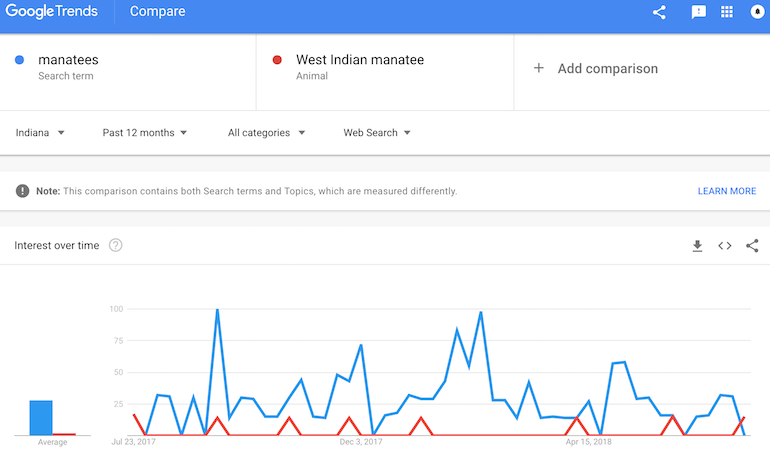
You can adjust your search and see how your brand is doing with your competitor. As you can see below, my manatees need to work on their branding if they want to catch up to the mighty elephants but you can start to see how you can compare keywords quickly. With Google Trends, you can download the report of your chosen keywords you want to influence your projections.
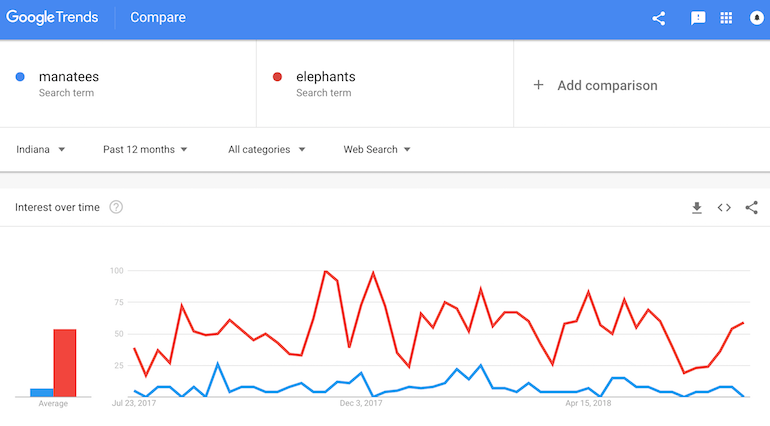
As mentioned earlier, the Keyword Planner in Google Ads can also compare traffic but on a paid level (no segmentations for YouTube or Shopping). Below you can see the Keyword Planner will allow you to search for new keywords, or you can forecast performance.

I am going to stick to my animal theme searches for this example and the Keyword Planner allows you to copy and paste which keywords you are interested in forecasting for the next month. You could also use the keyword report you pulled earlier and drop the keywords in this little box.
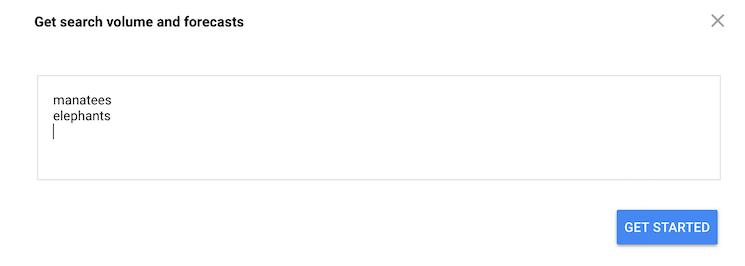
Once you hit get started you can look at the paid traffic and predicted CPC (cost per click) and monthly spend by the search term. You have the same flexibility as Google Trends by filtering results by location.
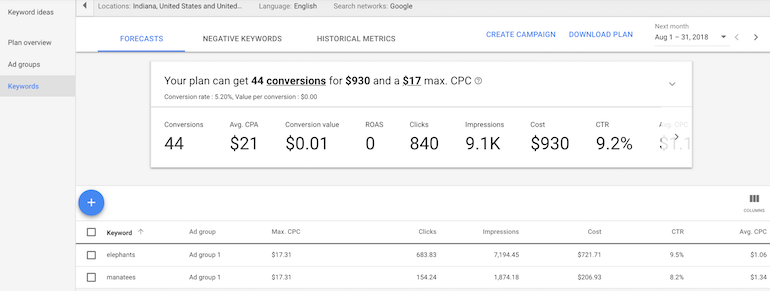
Lastly, you can toggle to the tab “Historical Metrics” to see how these keywords would have performed in the last twelve months.
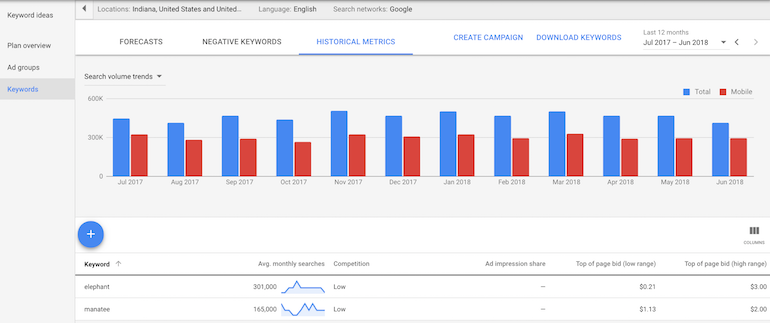
3. Doing the Math
Now for the best part, putting all of your information together for the client! This part has a lot of variables, but I compare the keywords percentage of spend in the account, and my Google Trends or Keyword Planner projected clicks. You can then multiply the clicks you think you will get with your average CPC for your monthly spend for your keywords. You can then adjust the other keywords percentage by the growth difference between the high performing keywords spend.
Example:
Top performing Keywords were 25% of accounts spend for the previous month.
Keyword Planner estimated in August 2018, I would get 200 clicks for my Top Performing Keywords.
Multiply Top Performing Keywords estimated 200 clicks by the average CPC of your Top Performing Keywords from the previous month.
Look at the percentage of spend growth of the Top performing Keywords from your previous Google Ads report – Let’s say it was 10%
Increase the remainder 75% of the budget by 10%.
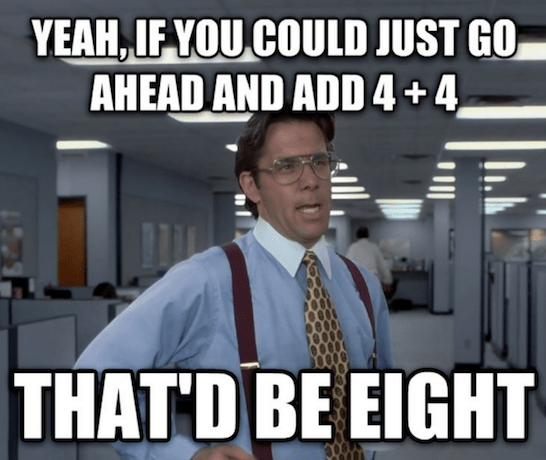
4. Set Expectations
Getting your numbers in order is a huge part of the process, but setting the expectations to the client could be the hardest part. When you are handing over your projections it is important for the client to remember that you are not a fortune teller and that these numbers are not set in stone. During my call with the client, I will go through the process of how I reached my numbers and remind them that this is based on last year’s Google searches and based on current performance. Once your account has been running for a few months and performance is consistent month over month, I would suggest reading Jacob Fairclough‘s blog “How to Get More Out of Excel Solver” on how to run more budget projections based on consistent spend because your account is no longer afflicted with sporadic spend.




